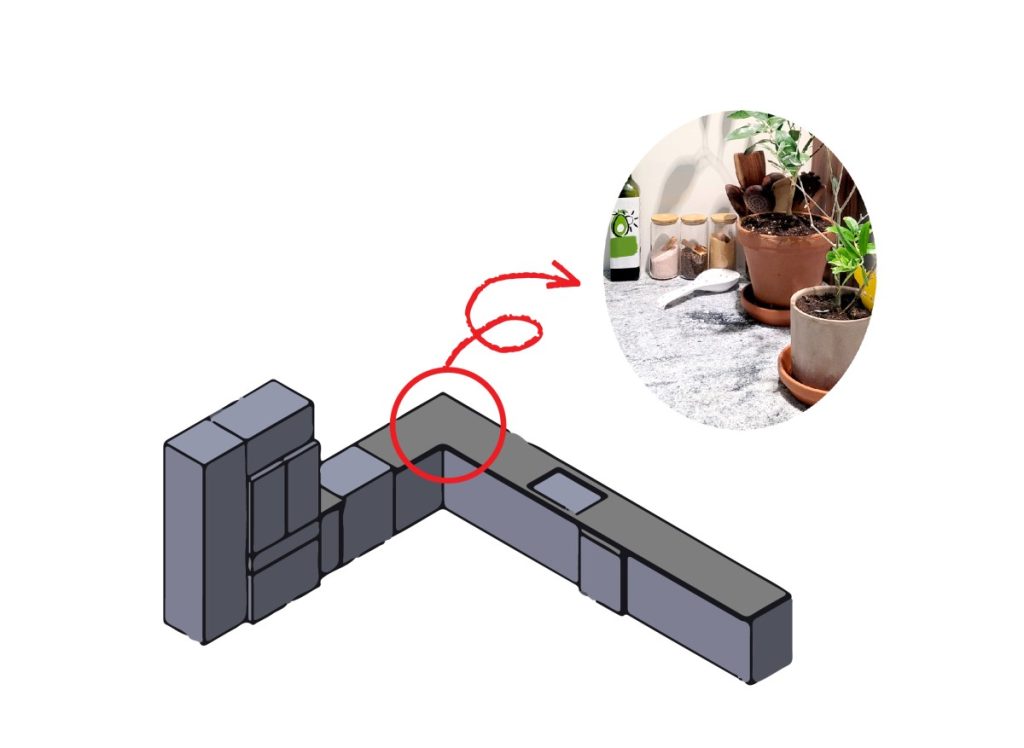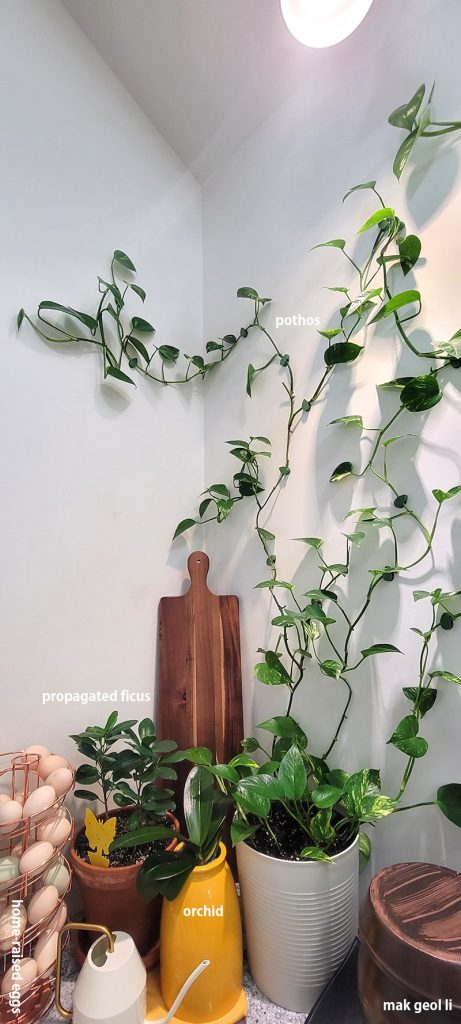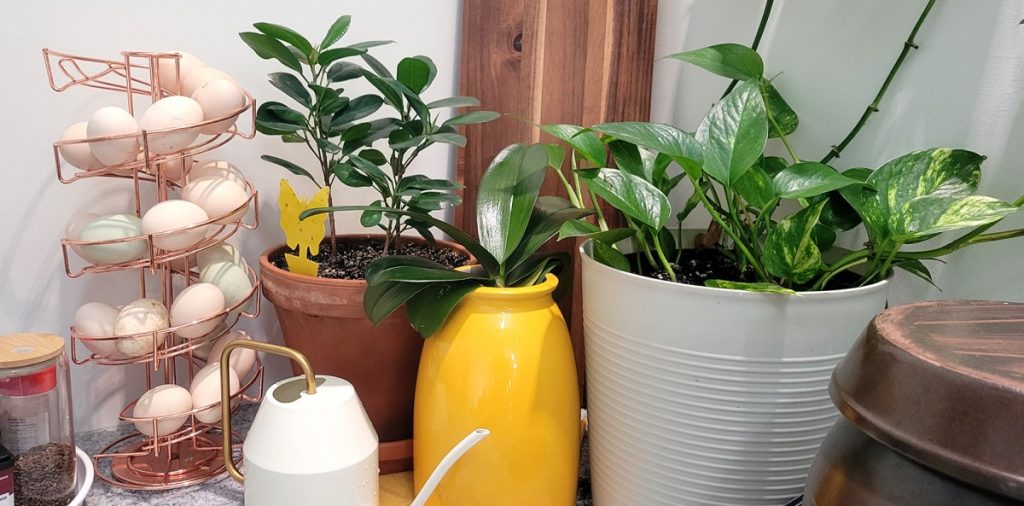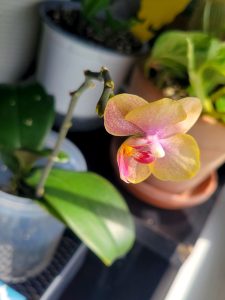One of my favorite hobbies as a homebody is growing indoor houseplants. There’s something so peaceful about being surrounded by greenery—plants that not only purify the air by absorbing carbon dioxide but also bring calm, beauty, and a natural touch to the space. There are so many stunning varieties, each adding their own charm and character to a room.
Of course, keeping them alive and thriving indoors—without access to natural sunlight, wind, or humidity—can be challenging. But I see it as part of the joy. I’m still learning what works best, experimenting with different lighting, watering routines, and placement. It’s a journey, and every new leaf feels like a small success.
This corner of the kitchen countertop was always a bit of a challenge. After we removed the wall cabinet, it left behind a tall, plain white wall—completely bare and awkward, especially since it was tucked into a perpendicular corner. I kept wondering how to transform this unused space into something eye-catching that would still blend well with all the pots, plates, and food items nearby.
Since the wall was fairly tall, I thought a plant might be the perfect touch. After a little research, pothos stood out as the best candidate out of all types of houseplants. It’s a popular low-maintenance indoor plant that thrives even in low light, and it naturally trails down or climbs along surfaces, which made it ideal for the vertical space.

We placed a pot of pothos on the countertop and installed a small grow light on the ceiling above it. I added a few decorative kitchen items—like seasoning jars and a wooden cutting board—and just like that, this once-forgotten corner turned into one of the prettiest spots in the house. Now it feels both fresh and functional, with a touch of green that really brings the kitchen to life.
✅ Ideal Grow Light Specs for Indoor Plants
🔆 1. Wattage
-
Low-light plants (like pothos, snake plant, peace lily):
10–30 watts per square foot is often sufficient. -
Medium-light to high-light plants (like herbs, succulents, veggies):
30–50 watts per square foot is ideal.
💡 Example:
A 20–40 watt LED grow light is perfect for most small houseplants like pothos.
🌈 2. Light Spectrum
-
Look for “full-spectrum” LED grow lights that cover the 400–700 nm range (visible light).
These mimic natural sunlight and support photosynthesis. -
Some lights are labeled as “white full-spectrum” or “red/blue grow lights”—either is fine, but full-spectrum white is better for aesthetics in living spaces.
💡 3. Lumens & PPFD
-
Lumens: Aim for 1000–2500 lumens per plant area for general indoor plants.
-
PPFD (Photosynthetic Photon Flux Density): Ideal for high-performance setups but not needed for casual home plants.
🕒 4. Light Duration
-
Most plants need 12–16 hours of light per day.
-
Use a timer to automate the schedule and avoid overexposure.

I ended up adding more plants next to the pothos, since the grow light had a fairly wide coverage and it felt like a waste to let it shine on just one plant. After a bit of thought, I carefully chose a couple of new companions—a propagated ficus tree and a small orchid. Their similar care needs and tolerance for bright, indirect light made them the perfect roommates for the pothos. Now, that little kitchen corner looks lush and vibrant, almost like a tiny indoor jungle, with each plant thriving together under the shared glow of the light.



